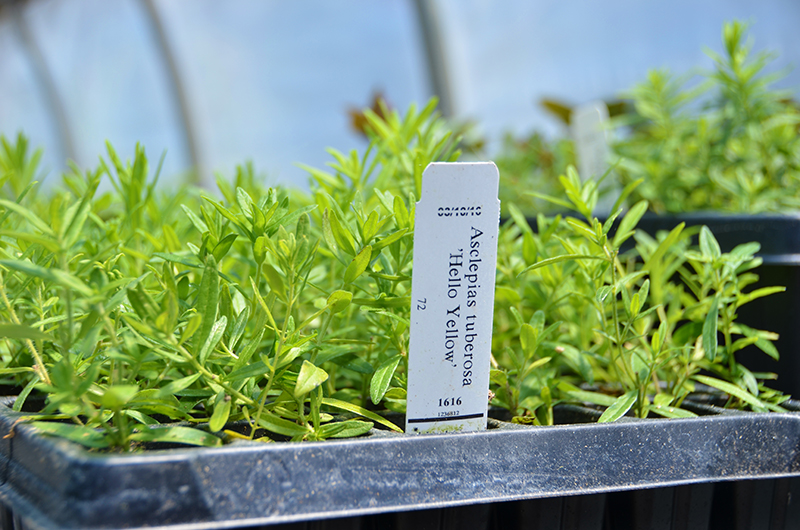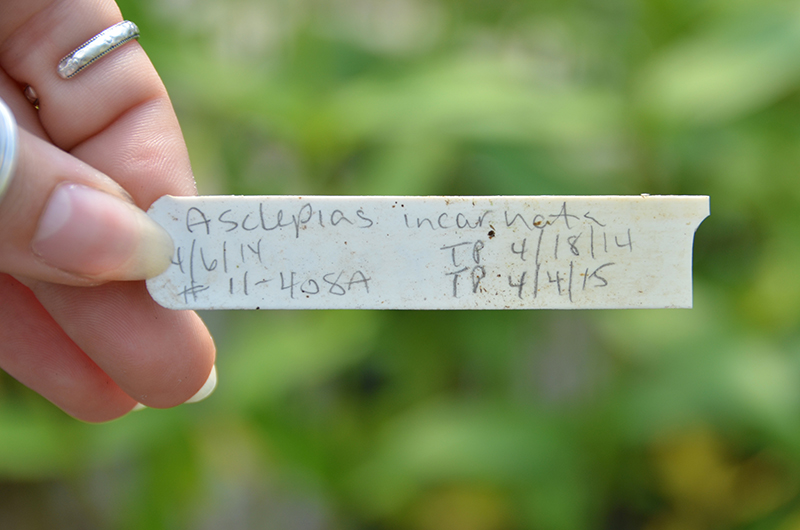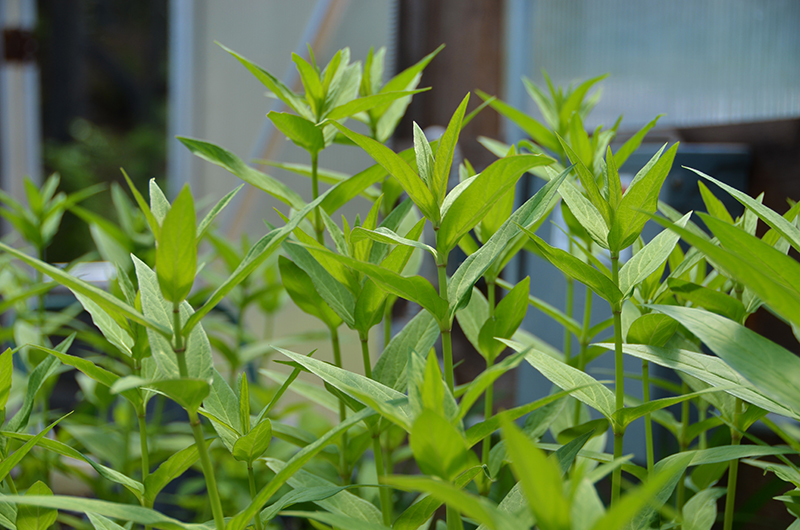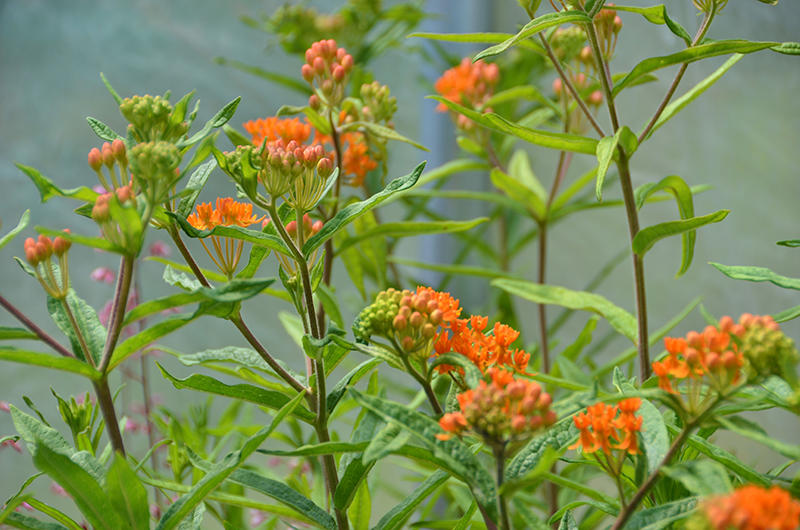It is incredibly important to grow enough milkweed to support and grow monarch populations. Milkweed comes in many varieties, and is the only food source for monarch caterpillars. Not only are the leaves essential for monarch caterpillar growth, but the flowers help nourish the adult butterflies as well. The amount of wild milkweed has declined in past years, and horticulturists and home gardeners alike have been working to restore it. This past year, there were less than 275,000 monarchs overwintering in Mexico, and that number was even further reduced by a late winter storm. By comparison, the most recent peak year of 1997 had over 1.2 million monarchs overwintering in the Mexican forest. Increasingly, researchers are finding: no milkweed, no monarchs.

The native species of milkweed in the Northeast that we are propagating here at Coastal Maine Botanical Gardens are swamp milkweed (Asclepias incarnata), orange milkweed (Asclepias tuberosa), and common milkweed (Asclepias syriaca). Horticulturist and propagator Dan Robarts is growing large amounts of these three varieties, in addition to experimenting with some small numbers of other beautiful – if not native – varieties.


Swamp milkweed (Asclepias incarnata) grows well in regular gardens, as well as in wet, swampy areas. This milkweed is “clump forming,” meaning it will grow in clumps and does not spread as aggressively as other types. The regular variety of A. incarnata is pink, but it also comes in a beautiful white variety known as ‘Ice Ballet.’ Both varieties are planted in our gardens.

Orange milkweed (Asclepias tuberosa) likes drier areas and climates. It comes in another variety by the name of ‘Hello Yellow’ that has vibrant yellow flowers. Both the orange and ‘Hello Yellow’ varieties are planted within our gardens. A. tuberosa are great because not only are they beautiful and helpful to our ecosystem by providing food for monarchs, the deer tend to leave them alone.
Common milkweed (Asclepias syriaca) is large and bushy, and grows steadily. This variety will take over a garden or field, making them great for naturalizing meadows. However, they may not be so great for a small garden, as it is hard to control the plant’s spreading tendencies.
If you do not garden in the Northeast but would like to grow milkweed that is native to your area, visit the PDF site below for more information based on your region. Save the monarchs!
http://monarchjointventure.org/images/uploads/documents/MilkweedFactSheetFINAL.pdf
— Sarah, Social Media Intern

